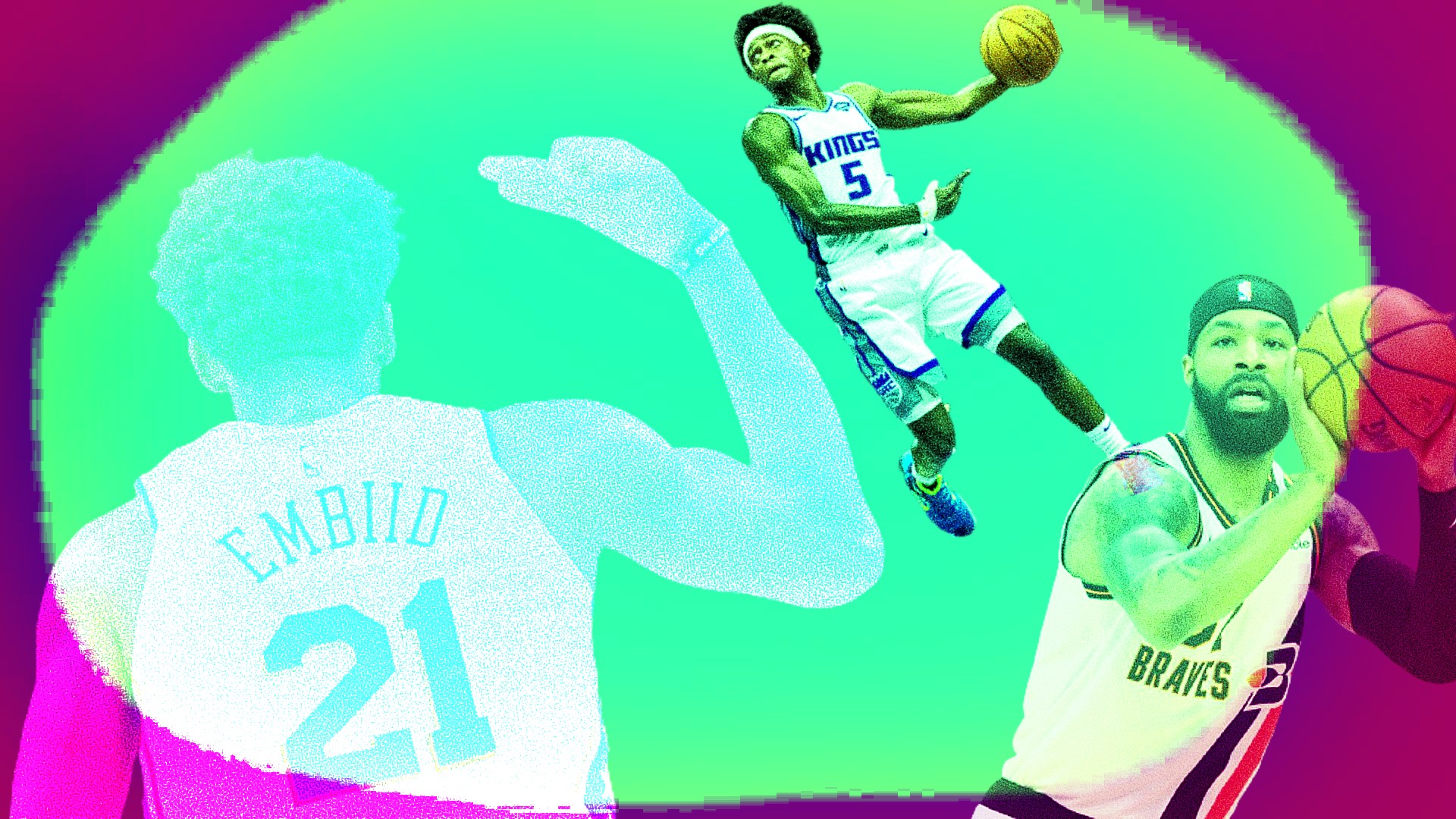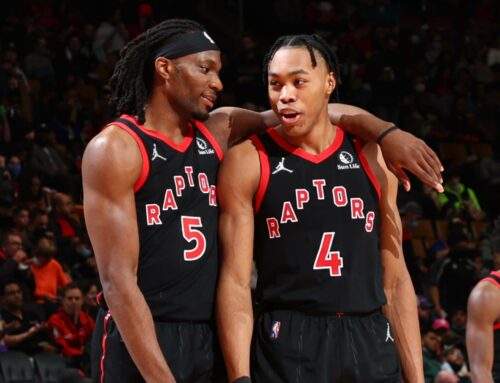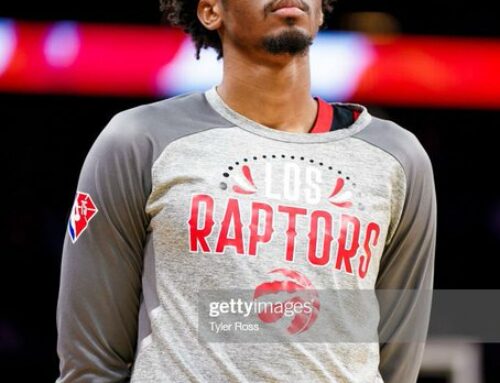Scoring in the NBA can so often be predictable.
Not in a denigrating way, it’s just the reality of supreme talent. Guys like James Harden and Luka Dončić are so darn good that their Divine performances become status quo. Ho hum, 40/12/8.
Such a guise of certainty, like the candy-shell concealing the chewy chocolate middle of a Tootsie Pop, makes anomalous moments all the tastier.
We know the usual suspects…or so we thought!
A sudden outburst of scoring or a hot streak from an unexpected source is a total, lovely surprise – unless it’s against your favourite team.
I submit to you Exhibit A (sorry, Cavs fans):
There’s also the less obvious stuff. Underlying trends that, without a little bit of data diving, may perhaps go unnoticed. Finds that the “never-fails” eye-testers wouldn’t necessarily spot or that traditional data cannot extract. It is the wonder – and, for some, the frustration – of analytics.
Statistical surprises can also serve as snapshots of change. A way for us to projectively or retrospectively – depending on how prophetic you may be – see a player shed an old skin for a new identity or incrementally evolve from a good player into a great one.
For the following three players, their newfound shooting success may wither into history as an outlier or bloom into future triumph.
Spot-Up Splendour: Marcus Morris Sr.
*Data refers to players who have played at least twenty-five games
Playing alongside two of the most lethal scorers in the league makes basketball-livin’ easy. They do the grunt work. You just do the shooting. Easy peasy.
At least, in theory.
NBA teams scour the corners of the basketball world to find knockdown shooters. Guys like Davis Bertans and Joe Harris were paid big dollars to essentially do that one thing.
When Marcus Morris Sr. signed a $64 million/four years contract, there was fear of an overpay. It seemed that to be the third scorer he’d need to be his ball-hoggy self, taking possessions away from the much-more-elite scorers, Kawhi Leonard and Paul George. The three of them would not fit seamlessly – so the criticism went.
Little did we know that Morris could both be the team’s third leading scorer and complement those two craftsmen at the same time.
It’s just not exactly as we thought. He’s less “here, go get a bucket” and more “here’s the bucket”. Of players who average at least three spot-up shots a game, Senior leads the league in accuracy (53%), points (6.7) and points per possession (1.47).
In some ways that’s not a surprise. He’s never been shy about shooting the ball. Over the last five seasons, he averaged at least eleven shots a game (last year was a career-high thirteen) on a less-than-desirable 43ish%.
In those years, Marcus played a more ball-dominant role. He either insisted upon (Boston) or was called upon (New York) to be a more central part of an offence. As a result, only 20-30% of his shots came off of spot-ups.
This year it’s topping out at 40%.
It’s an important realization for Marcus – props to his humility or to Head Coach, Ty Lue’s, command – that his most effective place on the floor is as a spot-up shooter.
He takes ten shots a game this season: 11% at the rim, 38% mid-range, and 51% from three. Four of his total shots are spot-ups and most likely all three-pointers (I lack the data to confirm that).
That’s new for Senior. In his two seasons in Boston, 20% and 25% of his attempts were at the rim. Last year in New York, 50% of his shots were mid-range.
In Los Angeles, neither his skill nor stubbornness justifies having the ball in his hands for long. Instead, he’s relegated to his most effective role as release valve. A salve for the defensive pain exerted upon KLAW and PG who each score a pinch more with Marcus on the floor.
Senior is not the Davis Bertans or Duncan Robinson or Buddy Hield type. He ranks in the thirties for catch & shoot attempts (catch & shoot shots are shots coming off movement, spot-ups mean you were not moving before your shot).
Those guys make their living by constantly being on the move. Often, plays are designed with them as the main or subsidiary option. Joe Harris, who is just behind Morris in spot-ups, averages two attempts a game coming off screens. Morris takes one attempt off screens every three games.
Instead, Senior waits patiently knowing it will come. Cause it always comes.
In the following compilation, watch how either Morris’ man gets sucked into a PG/Kawhi vortex or how almost every other defender zombie-like brainzzz! their way over to the initial or secondary attacks. Accustomed to the attention, a Clipper kicks and/or swings to Senior and Thwap!
The Clippers best lineup this season is with PG, Kawhi, Nicolas Batum, Reggie Jackson and Serge Ibaka at centre – they’re plus-32 in 157 possessions. So far, zero minutes have been played with Marcus Morris instead of Batum or R-Jax.
Perhaps that’s planned or it’s due to injuries (Serge has missed the last fifteen games, George and Morris have also missed a chunk of games), either way they’ve not explored it.
Come playoffs, keep a look out for this group. That combination of shooting and size could cause a lot of problems for less flexible rosters.
Pull-Up Problem: Joel Embiid
*Data refers to players who have played at least twenty-five games and average at least twenty minutes a game and shoot at least four pull-up attempts
When you think pull-up, you think dirty-handles-stop-on-a-dime-like guardplay. Naturally. As would I.
And we’d be right – normally. The top three in pull-up percentage are DeMar “Mid-Range for Life” DeRozan, Kyrie Irving, and Chris Paul respectively.
Fourth, though, is the 7’0”, 280 lbs gargantuan Joel Embiid.
His number of attempts are less, true. He shoots five pull-ups a game. CP3 shoots nine, CJ McCollum and Damian Lillard shoot eleven each. So he’s not going at the same rate.
But for such a very large man who is pretty much entirely unstoppable in the post – he ate a menu’s worth of Dallas centres on Monday night with thirty-six points – to have a consistent jumper at his disposal – sorry, not jumper, but jumpers, more specifically, an off-the-dribble jumper, a fadeaway jumper, and step-back jumper – is (A) unimaginable and (B) terrifying.
The wealth of different jumpers then gives Embiid freedom to attack the lane which is even…gulp…more frightening (especially for anyone awaiting him under the hoop).
Slower-footed defenders have no chance on a pump-fake, rip-and-go. Smaller ones will just get dragged into the lane like a two-year old resisting their parent’s pull into the dentist’s office.
Each year Embiid’s mid-range and three-point accuracy has improved, but only relatively to his previous sub-par shooting, never as an absolute threat. Now, it’s a league-wide problem.
He’s shooting 39% from three on three attempts a game and is in the 81st percentile for mid-range shooting for the entire league (90th in long mid-range)!
If he starts hitting longer-ranged shots at a higher clip, this league is in major trouble.
Major.
Slim Rim: De’Aaron Fox
*Data refers to players who have played at least 1000 minutes this year
In the NBA today, players, especially guards, without a legitimate shot are in for a career’s worth of frustration – just ask Eric Bledsoe, Ricky Rubio, and Elfrid Payton. Smart teams and defenders simply close down lanes and taunt those crafty attackers into shooting.
De’Aaron Fox seemed destined for a similar fate. Other than two years ago, when he had an anomalously good year shooting the three-ball, Fox was in the thirty-first percentile or lower shooting the ball from the mid-range and three in each of his three previous years. Only at the rim was he in the upper echelon of guards.
That’s what has made this year a full-on coming out party for Fox – if the Sacramento Kings had not been a complete Schmoop this season, Fox would likely have made the All-Star Game. Across the board, his shooting accuracy has buoyed despite an increase in volume.
On spot-up shooting, his effective field goal percentage has gone up 11% with one additional attempt. On pull-ups last year he shot 38% (27% on two threes) on six pull-ups a game. This year he’s at 38% (31% on five threes) on eight a game. And though not spectacular, he’s shooting 33% on six three-pointers a game versus last year’s 29% on four.
Bad news for defenders. No more sagging off Fox. Otherwise he’ll make you pay. Watch the repertoire. In his shorts? Step-back. Under the screen? Jack. Switch? Splash. Overplay his dominant hand? Spin and pull.
Fox has clearly improved as a finisher at the rim, but it’s his variety of pull-ups that’s allowed him to find easier shots once he’s arrived. Teams have to completely change tactics. His defenders and helpside worry more than ever before about the shot or pass.
All of this sets Fox up for what he’s best at: pillaging the paint.
Fox leads all NBA point guards (until late last night after I wrote this when Kemba Walker surpassed him) in at-rim field goal percentage (shots within four feet or less) with only Ben Simmons – a virtual centre-guard – having more attempts (Kemba has a third of Fox’s attempts, so take that Kemba!).
That’s big time. Fox has always been a strong finisher – in his rookie year he was in the 66th percentile for guards finishing around the rim, last year the 73rd. Now, being a more consistent threat in his pull-up and spot-up game, Fox has magically open sesameed the lane.
Which he’s exploited voraciously. Fox averages eighteen drives a game, sixth amongst players who have played twenty-five games or more, with a second-best 58% field goal percentage. He also scores the most points in the league off drives, tied with Shea Gilgeous-Alexander but on seven less drives a game.
It helps that in transition he’s a scythe in fields of wheat, slicing viciously into backpedalling defences. Accelerating, decelerating, in and out. There’s no managing that kind of velocity and shiftiness. It’s open road for Fox.
But defenders are no safer in the half court either where he’s more explosive than heated nitro-glycerine. Any kind of space gives him enough momentum to overcome any defender. By the time helpside arrives, Fox is doing his typical acrobatic finishes, softshell floaters, and violent throwdowns.
First, Rui Hachimura helps ever-so-slightly on Hield. Don’t do that. Then Rui overplays Fox’s left hand. Nuh-uh. Finally, watch how far out Fox is guarded on these last two plays with no help. It gives him all the space in the world to write Rudy Gobert’s epitaph and mangle Dennis Scott Jr.’s lower extremities.





